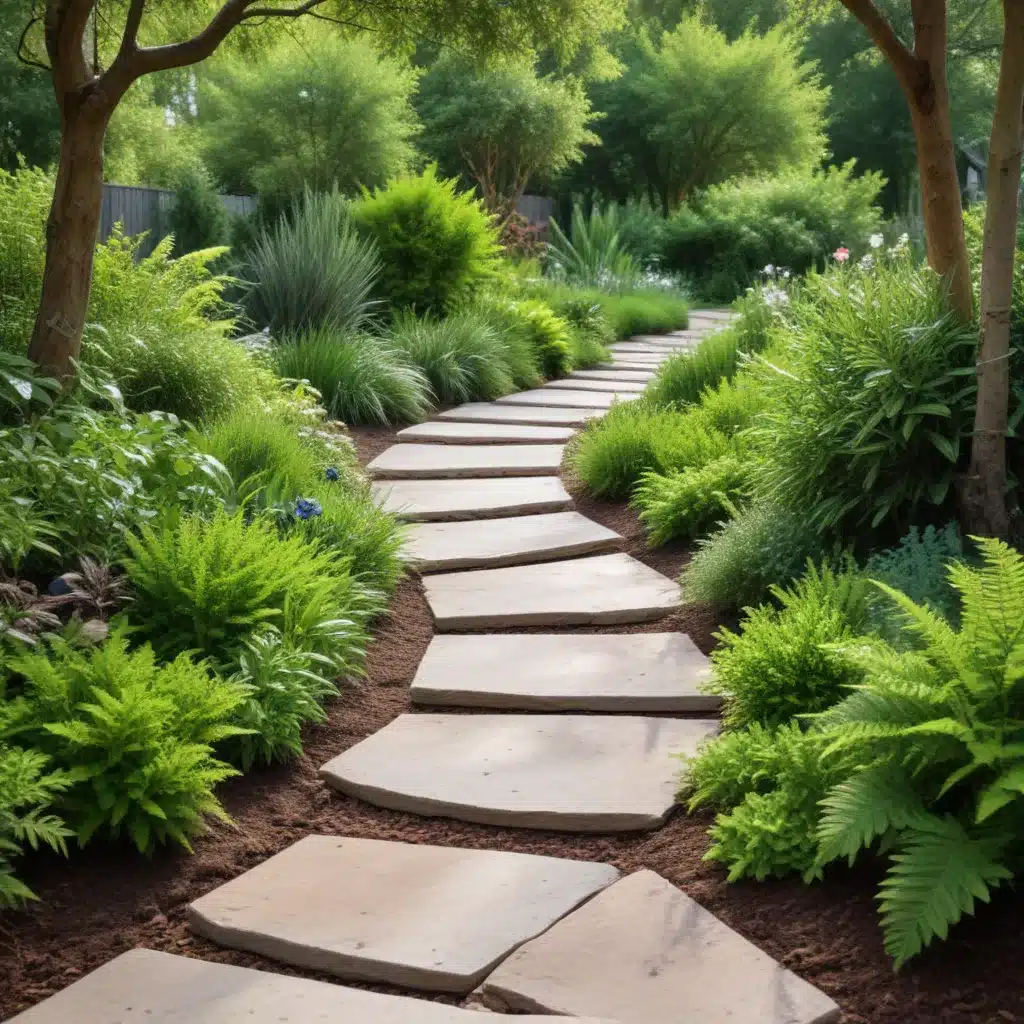
Eco-Friendly Outdoor Upgrades: DIY Sustainable Landscaping
As an experienced home improvement consultant, I’ve seen firsthand how outdoor renovations can quickly escalate in complexity and cost. However, with a strategic approach focused on sustainable landscaping, you can transform your yard into an eco-friendly oasis without breaking the bank. Whether you’re a reluctant renovator on a tight budget or an aspiring green thumb, this guide will equip you with the knowledge and tools to tackle DIY outdoor upgrades that are both environmentally-friendly and family-centric.
Sustainable Landscaping Principles
The foundation of any eco-friendly outdoor project lies in embracing native plant selection, implementing water conservation strategies, and maintaining healthy soil. By following these core principles, you can create a thriving landscape that requires minimal resources and supports local biodiversity.
Native Plant Selection: When choosing plants for your yard, opt for species indigenous to your regional climate. Native plants are naturally adapted to the local conditions, requiring less water, fertilizer, and maintenance compared to exotic ornamentals. Not only do they provide vital food and habitat for pollinators and wildlife, but native flora also lend a unique, regionally-authentic character to your landscape. Resources like the Reluctant Renovator’s native plant database can help you discover the best options for your area.
Water Conservation Strategies: Reducing outdoor water usage is a key tenet of sustainable landscaping. Incorporate drought-tolerant ground covers, xeriscaping techniques, and smart irrigation systems to dramatically cut your consumption. Rain gardens, bioswales, and permeable pavement allow excess rainfall to percolate into the soil rather than contributing to stormwater runoff. By prioritizing water-wise solutions, you’ll not only save money on your utility bills but also minimize your environmental impact.
Soil Health Maintenance: Healthy, nutrient-rich soil is the foundation for a thriving, low-maintenance landscape. Avoid harsh chemical fertilizers and instead, opt for organic matter like compost, well-rotted manure, or leaf litter to nourish your soil. Regular soil testing can help you understand your garden’s unique needs and make informed amendments. By nurturing the soil’s microbial life, you’ll create a more resilient ecosystem that supports vigorous plant growth with minimal intervention.
Renewable Hardscaping Materials
Hardscaping elements like pathways, patios, and retaining walls don’t have to compromise your eco-friendly aspirations. Explore renewable and recycled options that reduce waste and carbon footprint.
Permeable Pavement: Instead of traditional concrete or asphalt, consider permeable pavement solutions like porous pavers, decomposed granite, or even natural stone. These materials allow water to infiltrate the ground, recharging aquifers and reducing runoff. They also help reduce the urban heat island effect by absorbing less thermal radiation than impermeable surfaces.
Recycled Plastic Lumber: For structures like decking, fencing, or garden borders, recycled plastic lumber offers a durable, low-maintenance alternative to wood. Manufactured from reclaimed plastics, this versatile material is immune to rot, insects, and weathering, making it a long-lasting choice for your outdoor projects.
Natural Stone: When it comes to retaining walls, patios, or accent pieces, natural stone is a sustainable, beautiful option. Sourced locally when possible, natural stone has a minimal carbon footprint and blends seamlessly into the landscape. Plus, it’s an inert material that won’t leach harmful chemicals over time.
Wildlife-Friendly Gardening
Transforming your yard into a certified wildlife habitat not only enhances biodiversity but can also provide endless hours of enjoyment watching pollinators, birds, and other beneficial creatures thrive.
Pollinator-Attracting Plants: Incorporate a diverse selection of nectar-rich flowers, host plants for butterfly larvae, and pollen-producing blooms to support a vibrant population of bees, butterflies, hummingbirds, and other pollinators. Native species like coneflowers, milkweed, and native grasses are excellent choices.
Organic Pest Management: Forgo harsh pesticides and opt for organic pest control methods instead. Introduce beneficial insects like ladybugs or lacewings to naturally manage aphids and other garden pests. Companion planting can also deter unwanted visitors while attracting helpful predators. By maintaining a balanced ecosystem, you’ll minimize the need for toxic chemicals.
Water Sources & Shelter: Provide access to clean, fresh water through birdbaths, shallow dishes, or even a small pond or water feature. Incorporate diverse plant heights, dense shrubs, and brush piles to offer shelter and nesting sites for a wide range of wildlife.
Sustainable Lawn Alternatives
While traditional turf grass may be the default choice for many homeowners, there are eco-friendly alternatives that can reduce maintenance, conserve resources, and enhance your outdoor oasis.
Low-Maintenance Groundcovers: Replace water-thirsty, high-maintenance lawns with resilient groundcover plants like clover, sedum, or creeping thyme. These drought-tolerant, low-growing species form a dense, living carpet that requires minimal mowing, watering, or fertilizing.
Drought-Tolerant Grasses: For a more traditional lawn appearance, explore drought-tolerant grass varieties like buffalo grass, blue grama, or fine fescues. These hardy, deep-rooted species thrive with infrequent watering and can often go dormant during dry spells, bouncing back when conditions improve.
Eco-Friendly Lawn Care: If you prefer to maintain a traditional turf area, adopt sustainable lawn care practices. Mow high, leave clippings on the lawn, and avoid synthetic fertilizers or pesticides. Aerate the soil regularly and overseed with resilient, low-water grass types to create a lush, healthy lawn that’s easy on the environment.
Putting It All Together
Transforming your outdoor space into an eco-friendly, low-maintenance oasis may seem daunting, but by tackling projects one step at a time, you can steadily work towards your sustainable landscaping goals. Remember, small changes can have a significant cumulative impact, so don’t be afraid to start small and build momentum.
Consult resources like the Reluctant Renovator’s website for additional inspiration, cost-saving tips, and expert advice on navigating your DIY outdoor upgrades. With a little creativity, careful planning, and a green thumb, you can create a beautiful, wildlife-friendly landscape that aligns with your budget and environmental values.



